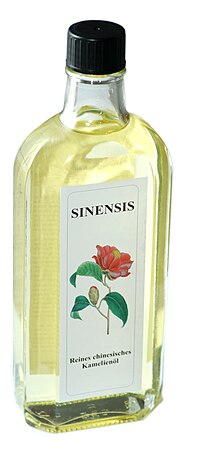
Characterization of three new viruses of the family Betaflexiviridae associated with camellia ringspot disease.
Sign Up to like & getrecommendations! Published in 2019 at "Virus research"
DOI: 10.1016/j.virusres.2019.197668
Abstract: Foliar chlorotic and necrotic ringspots of different sizes were observed in many ornamental camellia (Camellia spp.) species and cultivars with or without variegation symptoms. In this study, flexuous, filamentous virions of approximately 680-780 nm long were… read more here.
Keywords: characterization three; three new; camellia ringspot; capillovirus ... See more keywords

A Chromosome-Level Genome Assembly and Evolution Analysis of Andrena camellia (Hymenoptera: Andrenidae)
Sign Up to like & getrecommendations! Published in 2023 at "Genome Biology and Evolution"
DOI: 10.1093/gbe/evad080
Abstract: Abstract Andrena camellia, an effective pollinator of the economically significant crop Camellia oleifera, can withstand the toxic pollen of C. oleifera, making An. camellia crucial for resource conservation and cultivation of C. oleifera. In this… read more here.
Keywords: andrena camellia; biology; genome; camellia ... See more keywords

Leaf transcriptome analysis of a subtropical evergreen broadleaf plant, wild oil-tea camellia (Camellia oleifera), revealing candidate genes for cold acclimation
Sign Up to like & getrecommendations! Published in 2017 at "BMC Genomics"
DOI: 10.1186/s12864-017-3570-4
Abstract: BackgroundCold tolerance is a key determinant of the geographical distribution range of a plant species and crop production. Cold acclimation can enhance freezing-tolerance of plant species through a period of exposure to low nonfreezing temperatures.… read more here.
Keywords: oil tea; tea camellia; wild oil; camellia ... See more keywords

Comparison of the Chloroplast Genome Sequences of 13 Oil-Tea Camellia Samples and Identification of an Undetermined Oil-Tea Camellia Species From Hainan Province
Sign Up to like & getrecommendations! Published in 2022 at "Frontiers in Plant Science"
DOI: 10.3389/fpls.2021.798581
Abstract: The comparison of chloroplast genome (cpDNA) sequences among different plant species is an important source of plant molecular phylogenetic data. In this paper, the cpDNA sequences of 13 different oil-tea camellia samples were compared to… read more here.
Keywords: cpdna; camellia; tea camellia; oil tea ... See more keywords

Transcriptome and metabolome analyses provide insights into the relevance of pericarp thickness variations in Camellia drupifera and Camellia oleifera
Sign Up to like & getrecommendations! Published in 2022 at "Frontiers in Plant Science"
DOI: 10.3389/fpls.2022.1016475
Abstract: Camellia fruit is a woody edible oil source with a recalcitrant pericarp, which increases processing costs. However, the relevance of pericarp thickness variations in Camellia species remains unclear. Therefore, this study aimed to identify pericarp… read more here.
Keywords: pericarp; pericarp thickness; drupifera; camellia ... See more keywords

Assessment of the Genetic Relationship and Population Structure in Oil-Tea Camellia Species Using Simple Sequence Repeat (SSR) Markers
Sign Up to like & getrecommendations! Published in 2022 at "Genes"
DOI: 10.3390/genes13112162
Abstract: Oil-tea camellia trees, the collective term for a class of economically valuable woody oil crops in China, have attracted extensive attention because of their rich nutritional and pharmaceutical value. This study aimed to analyze the… read more here.
Keywords: oil tea; oil; ssr markers; camellia ... See more keywords

A Review on the Biological Activity of Camellia Species
Sign Up to like & getrecommendations! Published in 2021 at "Molecules"
DOI: 10.3390/molecules26082178
Abstract: Medicinal plants have been used since antiquity to cure illnesses and injuries. In the last few decades, natural compounds extracted from plants have garnered the attention of scientists and the Camellia species are no exception.… read more here.
Keywords: biological activity; activity camellia; review biological; camellia species ... See more keywords

The Dataset of Camellia Cultivars Names in the World
Sign Up to like & getrecommendations! Published in 2021 at "Biodiversity Data Journal"
DOI: 10.3897/bdj.9.e61646
Abstract: Abstract Background Camellias are popular ornamental, tea and woody-oil plants that have been cultivated throughout the world for centuries. To date, over 23,000 cultivars, with more than 45,000 cultivar names including synonyms, have been registered… read more here.
Keywords: camellia; world; dataset camellia; cultivar names ... See more keywords